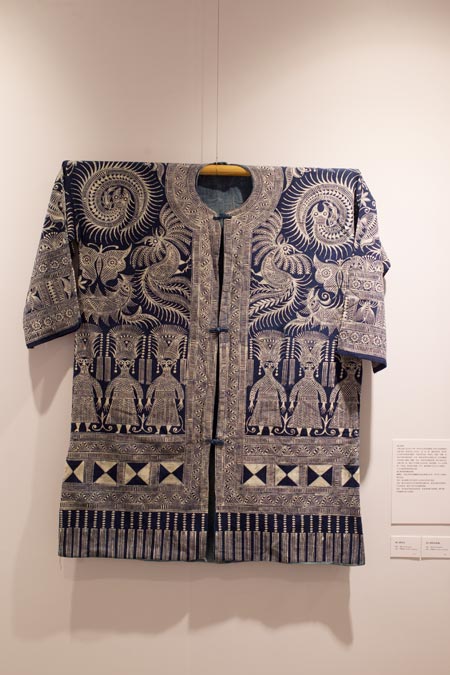Understanding of culture looms large
Updated: 2014-03-23 10:25
By Wu Yiyao (China Daily)
|
||||||||
 |
|
Photo by Gao Erqiang /China Daily |
"For some cloth makers and their families, a garment is a visual record of an epic that tells how the household is developed," Hu says.
Some tools, including looms and knives for drafting patterns and waxes for batik paintings, are also exhibited, giving visitors insights into the complicated cloth-production processes.
Unlike the modern fashion industry, the traditional cloth making is time consuming and the products last much longer. The patterns and the skills are usually the secrets of a family handed down from mother to daughter. Traditional cloth making is demanding, and requires a lifetime of learning and training. It may take dozens of steps and several months to finish a handkerchief-sized piece.
The folk patterns and traditional cloth-making crafts are precious in terms of their contributions to the database of the textile industry as they are still inspiring today's textile designers.
However, as mass-produced clothing is increasingly replacing traditional cloths, some of the patterns and crafts are on the edge of dying out.
"I think maybe one of the best ways to preserve the traditional patterns and crafts is to find their positions—or functions they potentially realize—to today's world," Hu says.
"For example, making them into smaller-sized products such as a shoulder bag, a purse and name-card holder."
IF YOU GO
3F, Found Muji, iapm, 999 Huaihai Zhonglu (Middle Road), Shanghai
021-6475-6855.
10 am-9 pm, until April 20.

 Gorgeous Liu Tao poses for COSMO magazine
Gorgeous Liu Tao poses for COSMO magazine
 Post-baby Duchess
Post-baby Duchess
 Victoria Beckham S/S 2014 presented during NYFW
Victoria Beckham S/S 2014 presented during NYFW
 'Despicable' minions upset Depp's 'Lone Ranger' at box office
'Despicable' minions upset Depp's 'Lone Ranger' at box office
 'Taken 2' grabs movie box office crown
'Taken 2' grabs movie box office crown
 Rihanna's 'Diamonds' tops UK pop chart
Rihanna's 'Diamonds' tops UK pop chart
 Fans get look at vintage Rolling Stones
Fans get look at vintage Rolling Stones
 Celebrities attend Power of Women event
Celebrities attend Power of Women event
Most Viewed
Editor's Picks

|

|

|

|

|

|
Today's Top News
Ukraine recalls troops in Crimea
Jet 'ended in ocean', China asks for all info
Xi calls for better ties with US
University 'bridges' US-China gap
Xi meets Obama in Netherlands
Huawei condemns NSA hacking
Obamas entourage wowed by China
Xi and Obama talk about jokes
US Weekly

|

|










